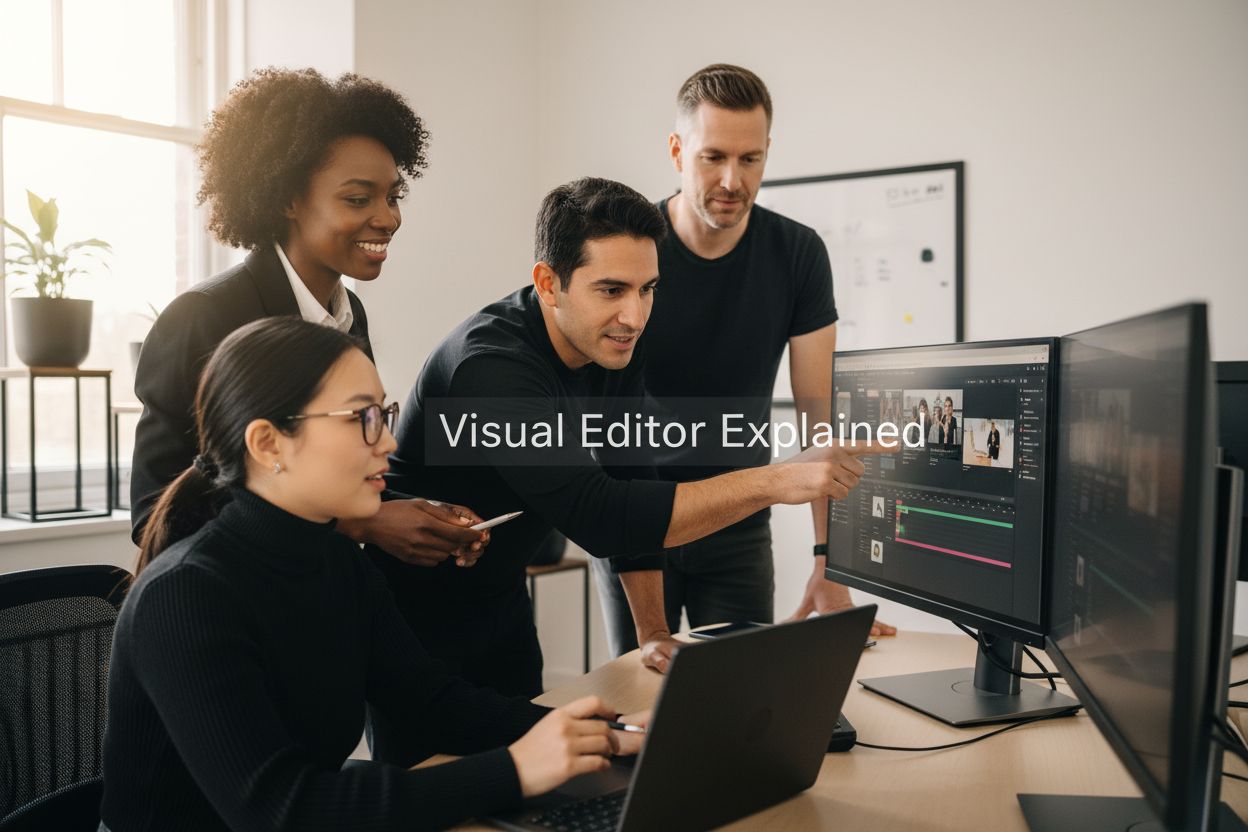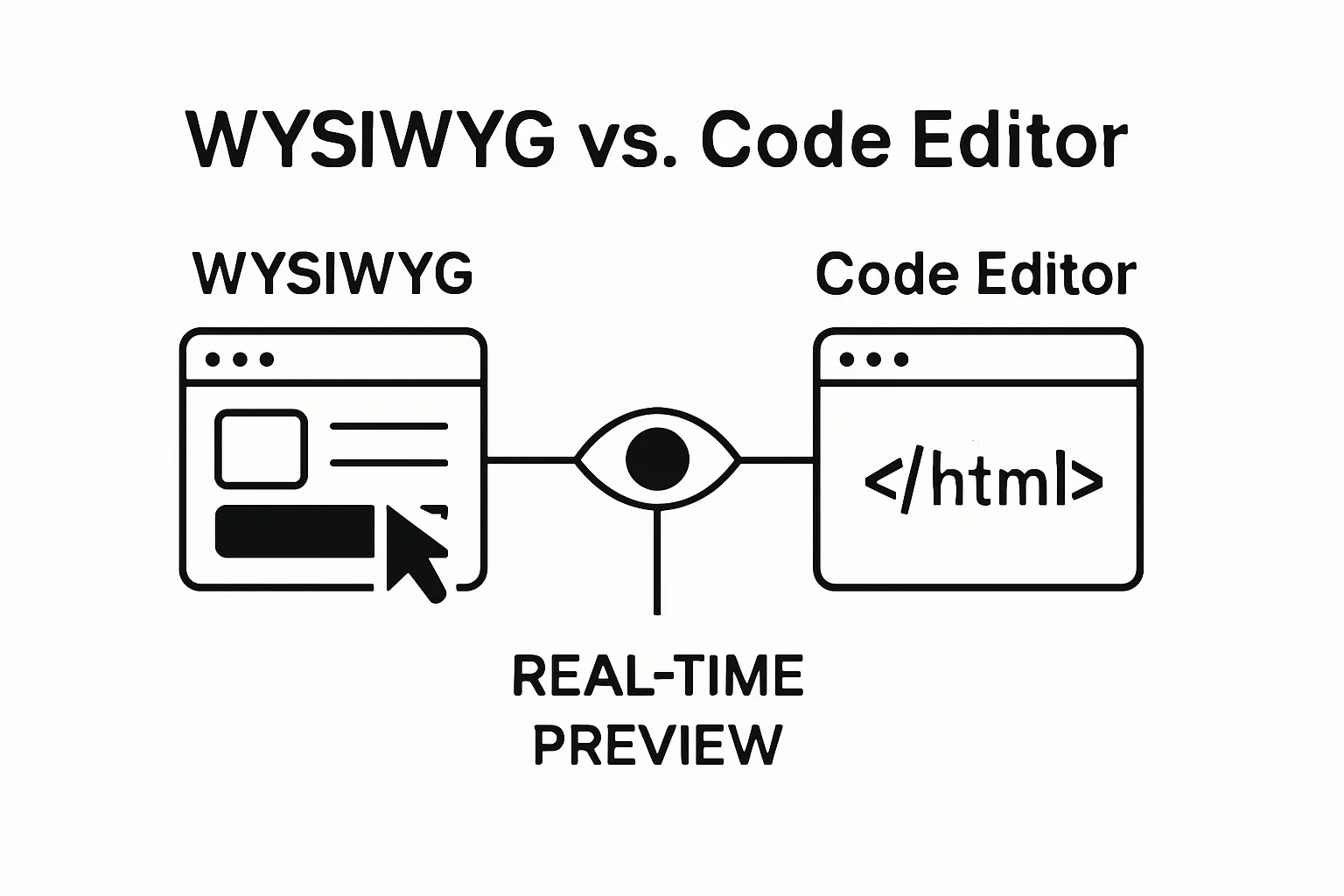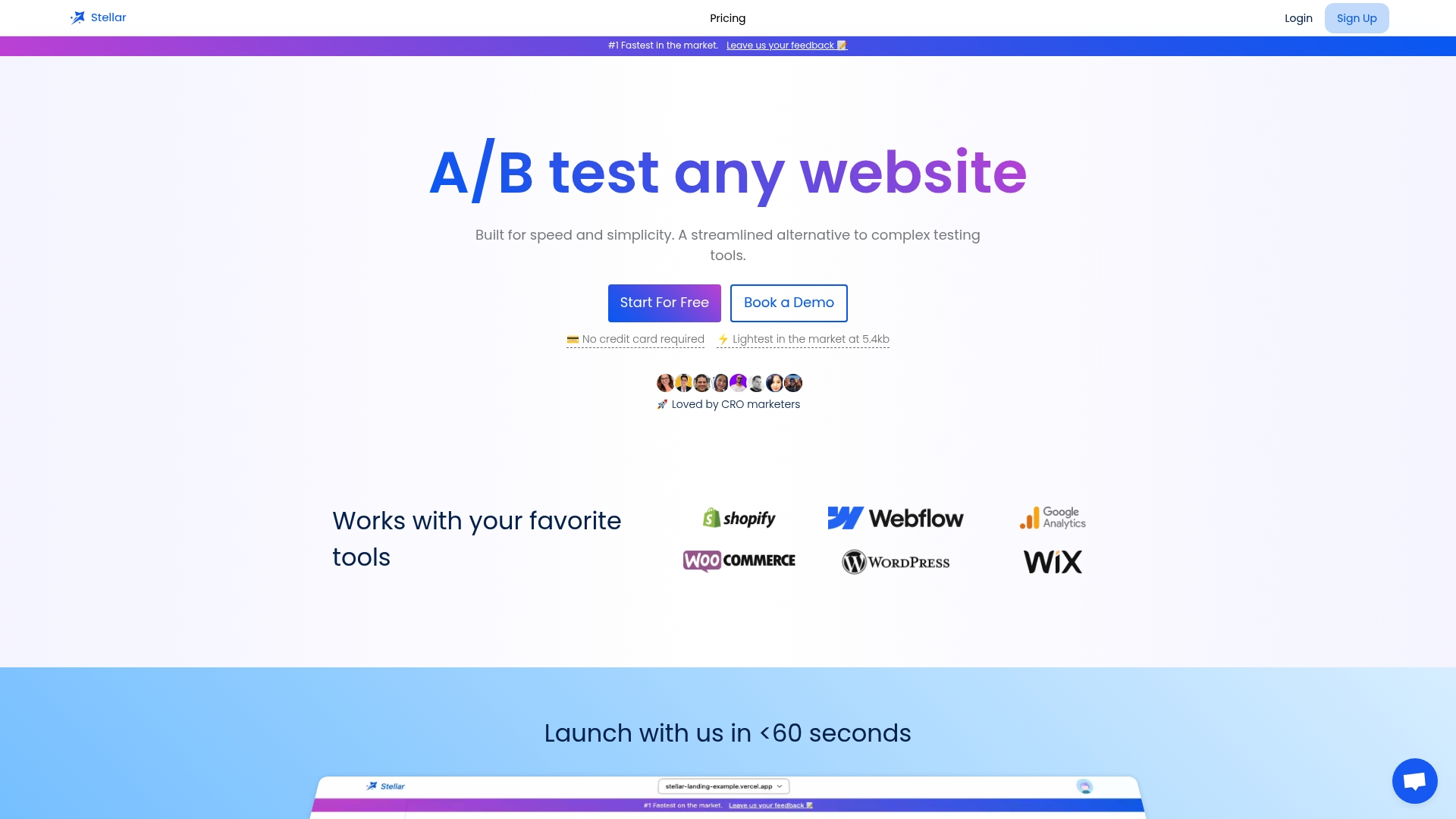
Visual Editor Explained: Understanding Its Importance and Use

Visual editors are changing how people create digital content and design web pages. Over 65 percent faster product page development is possible in e-commerce when teams use advanced visual editing tools. It sounds like the big win is in the flashy graphics or drag-and-drop features. The real magic is how these editors erase the tech barriers that used to slow everyone down.
Table of Contents
- Defining A Visual Editor: What Is It?
- The Importance Of Visual Editors In Digital Marketing
- How Visual Editors Enhance User Experience
- Key Features And Functionality Of Visual Editors
- Real-World Applications Of Visual Editors In E-commerce
Quick Summary
| Takeaway | Explanation |
|---|---|
| Visual editors simplify content creation | They allow users to design and modify content without coding, making it accessible to non-technical users. |
| Real-time feedback enhances design speed | Users can see changes instantly, promoting rapid prototyping and iteration for better efficiency. |
| Visual design impacts user engagement | Companies that focus on aesthetics see increased conversion rates, underscoring the importance of visual editors. |
| Democratizes design for teams | Visual editors empower individuals from various backgrounds to contribute to digital content creation effectively. |
| Essential for modern digital marketing | These tools are crucial for agile marketing strategies, helping teams respond quickly to consumer needs and trends. |
Defining a Visual Editor: What Is It?
A visual editor is a powerful digital interface that allows users to create, modify, and design content through an intuitive graphical environment without requiring extensive technical knowledge or coding skills. Unlike traditional text-based editing interfaces, visual editors provide a direct, interactive approach to content creation that closely mimics the final appearance of the output.
Core Characteristics of Visual Editors
Visual editors fundamentally transform how content is developed by offering a what you see is what you get (WYSIWYG) experience. This means users can manipulate design elements, text, and multimedia components in real time, seeing precisely how the content will appear to end users.
 The interface typically includes drag-and-drop functionality, immediate formatting options, and visual design controls that eliminate the need for complex HTML or CSS coding.
The interface typically includes drag-and-drop functionality, immediate formatting options, and visual design controls that eliminate the need for complex HTML or CSS coding.
Key Functionality and User Experience
The primary goal of a visual editor is to democratize content creation by making design accessible to individuals with varying technical backgrounds. By providing an intuitive interface, these tools enable:
- Instant visual feedback on design changes
- Simple manipulation of layout and design elements
- Quick integration of multimedia components
- Seamless formatting without understanding underlying code
- Rapid prototyping and content iteration
Professional designers and marketers can leverage visual editors to rapidly develop engaging web pages, landing pages, email templates, and other digital assets with minimal technical overhead.
VIDEO:video_content] According to [UX research from Nielsen Norman Group, user-friendly visual interfaces significantly reduce cognitive load and accelerate content production processes by presenting design options in a clear, interactive manner.
The Importance of Visual Editors in Digital Marketing
Visual editors have become an indispensable tool in modern digital marketing strategies, enabling teams to create compelling, responsive content with unprecedented speed and efficiency. By transforming complex design processes into intuitive experiences, these platforms have revolutionized how marketers develop and deploy digital assets across multiple channels.
Strategic Content Creation Capabilities
In the rapidly evolving digital landscape, marketing teams require tools that support quick iteration and responsive design. Visual editors provide strategic advantages by allowing marketers to prototype, test, and modify content without extensive technical dependencies. This capability is critical for organizations seeking to maintain agile marketing approaches. Learn more about marketing analytics optimization to understand how visual editors integrate with broader digital strategies.
Performance and Conversion Impact
The direct correlation between visual design and user engagement cannot be overstated. According to Adobe's Digital Trends Report, companies that prioritize user experience through advanced visual design tools see significantly higher conversion rates. Visual editors enable marketers to:
- Create visually appealing landing pages
- Implement rapid A/B testing designs
- Develop personalized user experiences
- Reduce design production time
- Minimize technical barriers to content creation
By bridging the gap between design complexity and user accessibility, visual editors empower marketing teams to produce high quality, responsive content that resonates with target audiences. The ability to visualize changes in real time, coupled with seamless integration across digital platforms, makes these tools a cornerstone of modern digital marketing infrastructure.
How Visual Editors Enhance User Experience
User experience represents the critical intersection between digital design and human interaction, with visual editors emerging as powerful tools that transform how users perceive and engage with online content. By providing intuitive, responsive design interfaces, these platforms fundamentally reshape the way digital experiences are crafted and consumed.
Simplifying Complex Design Interactions
Visual editors dramatically reduce the cognitive load associated with digital content creation by offering immediate visual feedback and seamless design manipulation. Unlike traditional coding environments, these interfaces allow users to interact directly with design elements, seeing real-time changes that mirror the final user experience. Learn more about image optimization techniques to understand how visual design impacts overall user engagement and website performance.
Creating Personalized and Responsive Experiences
Modern user experience demands personalization and adaptability across multiple devices and screen sizes. According to Forrester Research, organizations that prioritize user-centric design see up to 400% increased conversion rates. Visual editors enable this by providing tools that support:
- Responsive design across device types
- Real-time content customization
- Instant layout and element adjustments
- Dynamic interaction modeling
- Seamless multimedia integration
By bridging the gap between design complexity and user accessibility, visual editors empower creators to develop intuitive, engaging digital experiences that resonate with audiences. The ability to prototype, test, and refine designs quickly ensures that user interfaces remain dynamic, accessible, and aligned with evolving user expectations.
Key Features and Functionality of Visual Editors
Visual editors represent sophisticated digital design platforms that transcend traditional content creation tools by offering comprehensive, user-friendly interfaces that empower users to develop complex digital experiences with minimal technical expertise. These advanced systems integrate multiple design capabilities into a seamless, intuitive environment.
Core Design and Interaction Capabilities
Modern visual editors deliver robust features that transform content development workflows. By providing direct manipulation tools, these platforms enable users to interact with design elements as if they were physical objects, breaking down traditional barriers between conceptualization and execution. Explore advanced marketing digital formation resources to understand how these technologies are reshaping professional content creation strategies.
Advanced Technical Functionalities
The technical sophistication of visual editors extends far beyond basic design manipulation. According to Nielsen Norman Group's UX Research, these platforms provide critical functionalities that streamline complex design processes. Professional visual editors typically incorporate:
- Real-time collaborative editing capabilities
- Responsive design preview across multiple devices
- Advanced CSS and layout manipulation
- Integrated asset management systems
- Automatic code generation and optimization
- Semantic design structure preservation
By integrating these advanced features, visual editors eliminate traditional technical barriers, allowing creative professionals to focus on design innovation rather than coding complexities.
Below is a table organizing the core features and advanced functionalities of modern visual editors to help readers quickly compare key capabilities discussed in the article.
| Feature/Functionality | Description |
|---|---|
| Drag-and-drop design | Lets users move and place design elements visually without coding |
| Real-time visual feedback | Changes made are displayed instantly, supporting rapid prototyping and iteration |
| Responsive design preview | Users can see how content will look on different devices, ensuring adaptability |
| Collaborative editing | Multiple users can work on content simultaneously in a shared environment |
| Integrated asset management | Centralized handling of images, videos, and other media within the editor |
| Automatic code generation/optimization | The platform generates optimized code in the background, removing manual coding needs |
| Semantic structure preservation | Maintains clean, accessible underlying code and design hierarchies |
Real-World Applications of Visual Editors in E-commerce
E-commerce platforms have embraced visual editors as transformative tools that enable businesses to create dynamic, engaging online shopping experiences with unprecedented flexibility and speed. These sophisticated design interfaces have revolutionized how digital retailers approach website design, product presentation, and customer interaction strategies.
Enhancing Product Page Customization
Visual editors empower e-commerce teams to rapidly prototype and implement compelling product page designs without extensive technical intervention. By providing intuitive drag-and-drop interfaces, these tools allow marketers and designers to experiment with layout, imagery, and content placement in real time. Explore advanced e-commerce navigation optimization strategies to understand how design interfaces can dramatically improve user experience and conversion rates.
Streamlining Conversion Optimization Processes
According to Forrester Research, organizations utilizing advanced visual editing tools can reduce product page development time by up to 65%. E-commerce visual editors facilitate critical functionalities such as:
- Rapid landing page prototyping
- Instant product display configuration
- Dynamic pricing and promotion overlay design
- Seamless mobile responsiveness testing
- Immediate visual A/B testing setup
By breaking down technical barriers and enabling non-technical team members to contribute directly to design processes, visual editors have become essential tools in creating agile, responsive e-commerce experiences that adapt quickly to market demands and consumer preferences.
The following table summarizes how visual editors impact key areas in e-commerce performance and team workflows, as described throughout the article.
| E-commerce Impact Area | Contribution of Visual Editors |
|---|---|
| Product page customization | Streamlines layout, content, and imagery changes without technical bottlenecks |
| Conversion optimization | Enables rapid A/B testing, quick iterations, and implementation of high-converting designs |
| Cross-team collaboration | Allows non-technical staff to contribute directly, democratizing design and content creation |
| Speed to market | Reduces development time for product and landing pages by up to 65%, accelerating launches |
| Responsive experience | Ensures design adaptability across devices, enhancing customer shopping experiences |
| Dynamic promotion management | Facilitates instant updates to pricing, promotions, and overlays, allowing teams to react to market trends |

Transform the Way You Edit and Optimize With Stellar's Visual Editor
Struggling with complex interfaces or slow coding processes every time you want to update your digital experiences? As you have learned, a visual editor can bridge the gap between technical barriers and speedy content creation. If the pain of needing faster A/B testing or simpler updates is holding you back, Stellar's no-code visual editor gives you direct, real-time control without technical hassles. See changes instantly, personalize landing pages, and accelerate your workflow while your website stays lightning fast thanks to a script that weighs only 5.4KB.

Why wait to see the benefits of rapid experimentation and actionable analytics? Explore Stellar's advanced features and unlock efficiency for your next campaign. Start now and experience how effortless high-performing A/B tests can be with Stellar.
Frequently Asked Questions
What is a visual editor?
A visual editor is a digital interface that allows users to create and modify content using an intuitive graphical environment, providing a WYSIWYG (what you see is what you get) experience without the need for coding skills.
How do visual editors enhance user experience in digital content creation?
Visual editors enhance user experience by simplifying complex design interactions, offering real-time visual feedback, and allowing for the easy manipulation of design elements, which helps in creating engaging content quickly and intuitively.
What are the strategic advantages of using visual editors in digital marketing?
Visual editors enable quick content iteration, responsive design capabilities, and reduce technical dependencies, allowing marketing teams to rapidly prototype and adapt content strategies to meet evolving market demands.
How do visual editors impact conversion rates in e-commerce?
Visual editors contribute to higher conversion rates in e-commerce by streamlining product page customization, enabling rapid A/B testing, and facilitating dynamic user experiences that resonate with customers, all of which enhance overall user engagement.
Recommended
Published: 10/6/2025